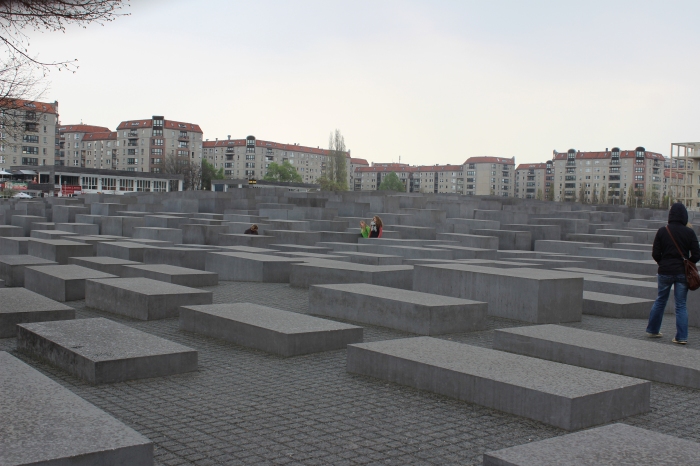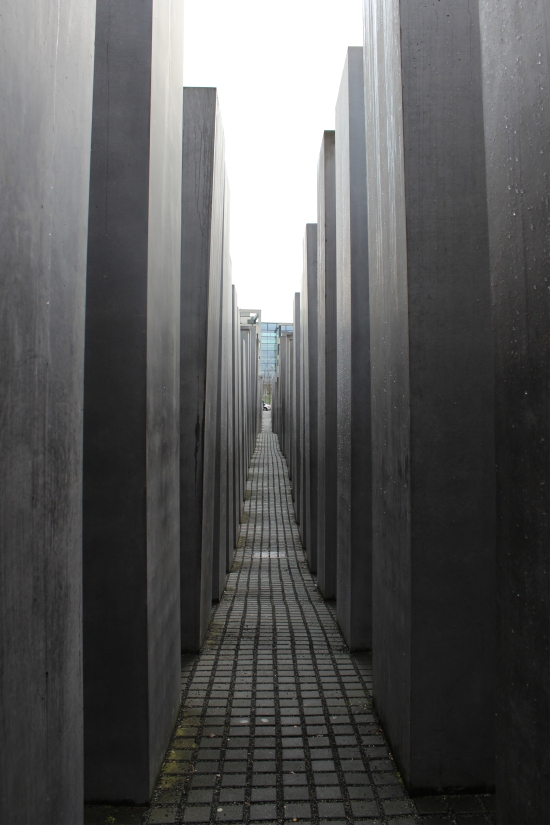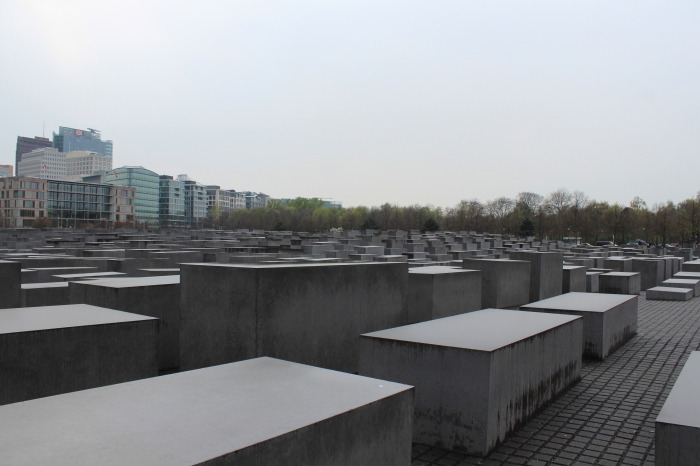On Sarah’s last day in Berlin, it was a must for us to visit the Holocaust Memorial near the Brandenburger Tor. Built in the early 2000’s, architect Peter Eisenman won a competition to design the Holocaust Memorial that covers nearly a city block. The memorial is comprised of large slabs of stone placed on a downward sloping ground that radiates towards the center of the space. Everything about this memorial is meant to be disorienting and visiting this memorial is really quite an experience in itself.
In searching for the instability inherent in an apparently stable system, the design begins from a rigid grid structure composed of some 2,700 concrete pillars, or stelae, each 95 centimeters wide and 2.375 meters long, with heights varying from zero to 4 meters. The pillars are spaced 95 centimeters apart to allow for only individual passage through the grid. In addition, while the difference between the ground plane and the top plane of the pillars may appear to be random and arbitrary, a matter of pure expression, this is not the case. Each plane is determined by the intersections of the voids in the pillar grid and the gridlines of the larger site context of Berlin. In effect, a slippage occurs in the grid structure, causing indeterminate spaces to develop within the seemingly rigid order of the monument. These spaces condense, narrow, and deepen to provide a multilayered experience from any point in the gridded field. The agitation of the field shatters any notions of absolute axiality and instead reveals an omni-directional reality. The illusion of order and security in the internal grid and the frame of the street grid are thus destroyed.
– Official website
In this context, the monument attempts to present a new idea of memory as distinct from nostalgia. We propose that the time of the monument, its duration, is different from the time of human experience and understanding. The traditional monument is understood by its symbolic imagery, by what it represents. It is not understood in time, but in an instant in space; it is seen and understood simultaneously. Even in traditional architectures such as labyrinths and mazes, there is a space-time continuum between experience and knowing; one has a goal to work one’s way in or out.
– Official website
In this monument there is no goal, no end, no working one’s way in or out. The duration of an individual’s experience of it grants no further understanding, since understanding is impossible. The time of the monument, its duration from top surface to ground, is disjoined from the time of experience. In this context, there is no nostalgia, no memory of the past, only the living memory of the individual experience. Here, we can only know the past through its manifestation in the present.
– Official website
This is a very quiet space and it is eery how quickly people disappear walking through the memorial. Sarah, Annalisa, and I could turn a corner and separately hide behind different slabs without having the person know which direction we went. I guess that might be the point of the design of this memorial.



